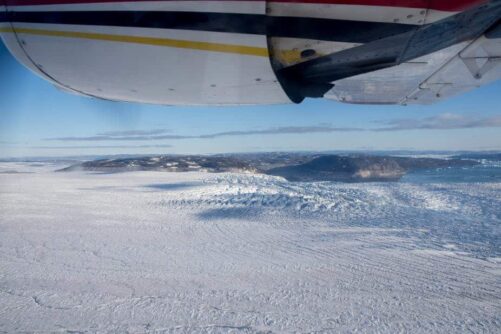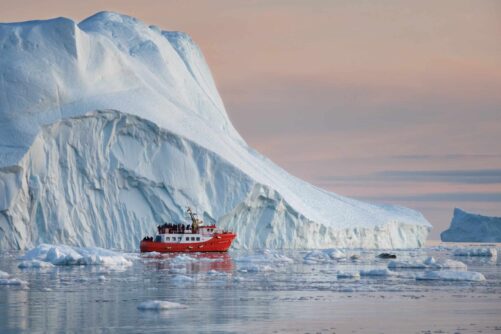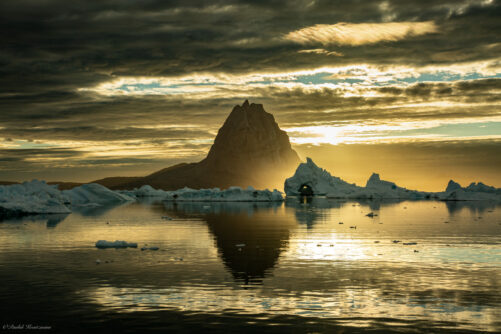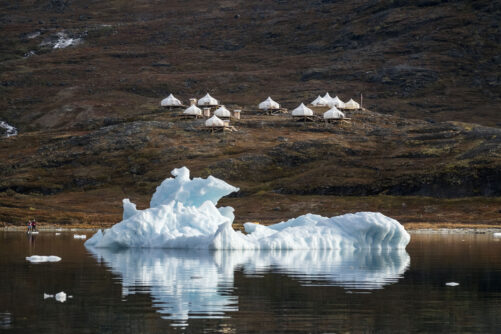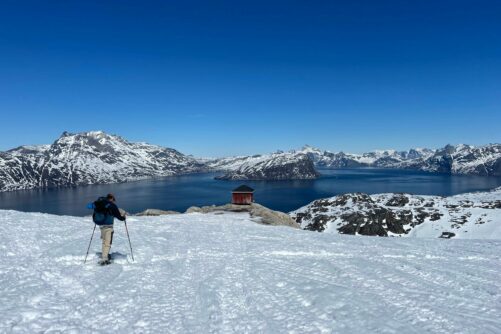

Arctic char photos in Greenland
Jump to chapter
Published: 05/06/2020
Reading time: 7 minutes
Childhood memories and Arctic char in Kangerlussuaq
It is 30 years since I left Greenland, but my interest is undiminished. In the meantime, my fishing rod has been replaced by an underwater camera.
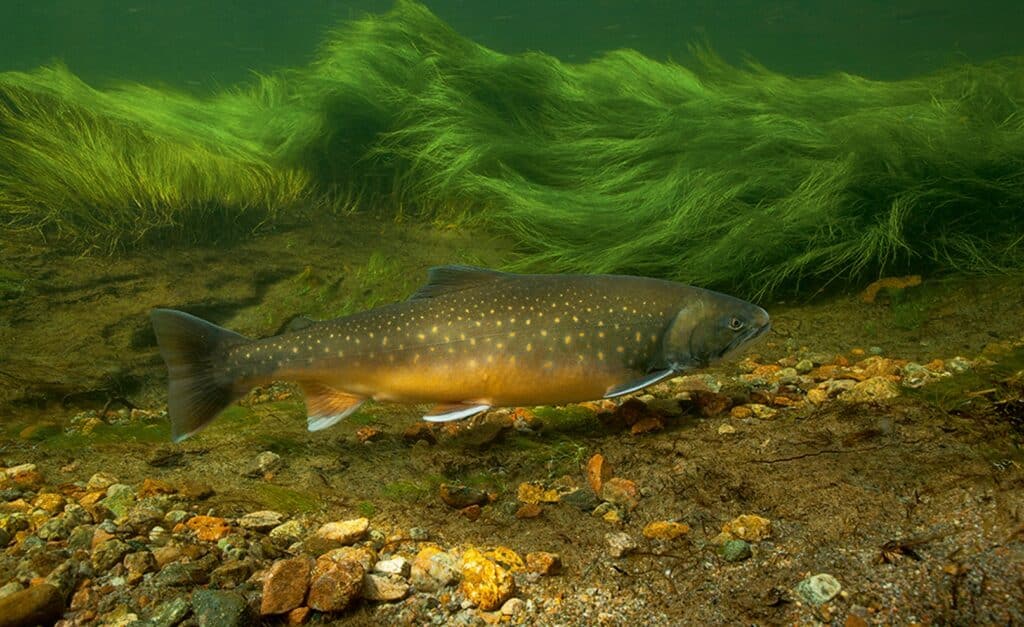
I stare enthralled into the clear water that gently flows past; the sounds of the river have a calming effect, almost meditative. The sun is shining from a clear sky and its rays play in the clear water and on the gravel riverbed.
The air is clean and dry and my gaze wanders up from the river and out through the valley. There is a vastness here and a feeling of freedom follows quite naturally. My attention is soon drawn back to the waters of the river, where several dark shadows swim at a surprisingly high speed against the current. It is August and it is the season for Arctic char in Greenland. I grab my underwater camera and move slowly out into the river.
My interest for salmon and Arctic char started during my childhood in Greenland. It is 30 years since I left Greenland, but my interest for Arctic char is undiminished. However, my fishing rod has been replaced by an underwater camera.
I visited Greenland in the last two summers to relive childhood memories and not least to film and take photographs of the annual migration of Arctic char in the clear waters of West Greenland’s rivers.
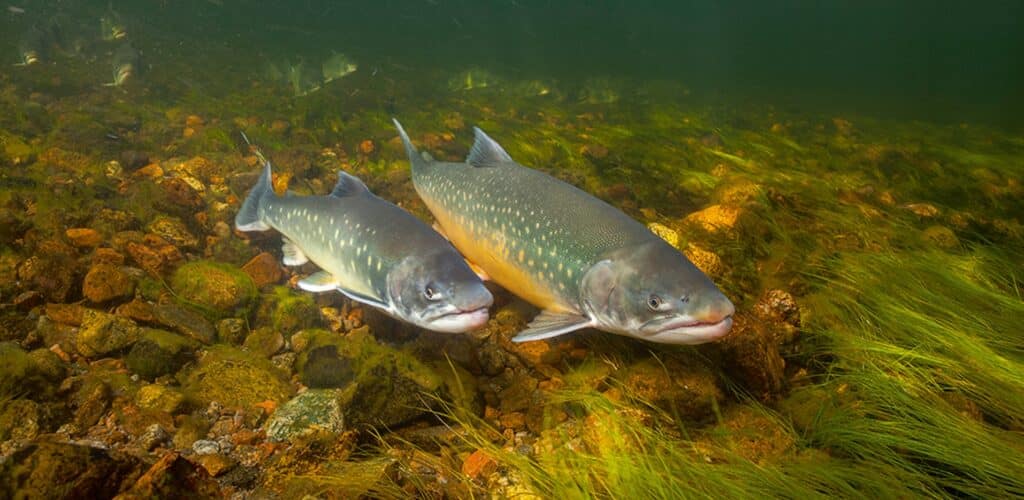
Kangerlussuaq In The 70s
I was born and raised in the Greenland of the 70s. It was a time when there were a large American military base and a population of more than 2000 people in my home town of Kangerlussuaq. That is about four times as many people as live there today, long after the closing of the military base.
My childhood was a time with violent events. For example, I remember August 28th, 1976 when an American Lockheed Starlifter C-141A aircraft crashed. 23 people lost their lives here, just a few hundred meters from the school I attended. It was a tragic accident, but fortunately, the good memories take up most space.
Among these are my memories of the many trips in Greenland’s nature.
My father was an enthusiastic hunter and angler and he often took me with him. We traveled by foot, in the car or by snowmobile, by boat and not least, in a small Piper aircraft when we went further afield than Kangerlussuaq.
The trips in the summer months were very special, where we walked on the soft underlay in the fells with the wonderful fragrance of marsh Labrador tea. There were beautiful, deep valleys with clear river water around Arnangarnup Qoorua (Paradise Valley) and there were vast expanses and dry, clear air together with the dramatic thundering inland ice, which is constantly moving.
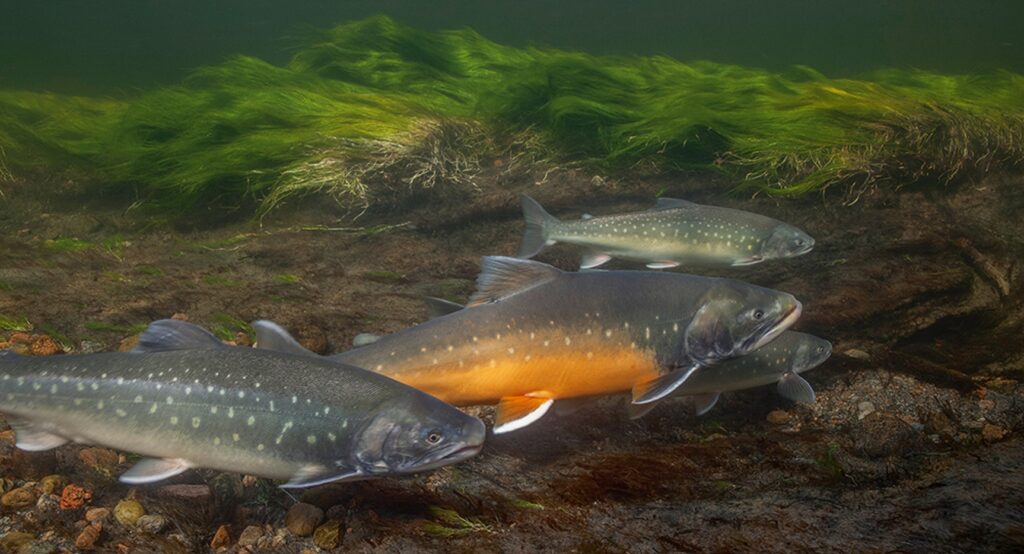
Kangerlussuaq, from base to village
My family and I left Greenland in 1979 and today I work as a researcher in the pharmaceutical industry in Denmark, very far from Greenland’s nature and my childhood memories. But the memories from Greenland have drawn me since I left the country and I have visited Kangerlussuaq several times up through the 80s and 90s, most recently in 2011 and 2012.
Since my childhood years, a lot has changed in Kangerlussuaq as a natural consequence of the introduction of home rule in 1979 and the closing of the American airbase in 1992. Especially striking is the absence of military personnel and aircraft of all types and sizes which dominated the scene in my childhood. Today, the military personnel have been substituted to some degree by tourists from all over the world. This is also a striking contrast to the Kangerlussuaq of the 70s, where tourism was limited and primarily consisted of Scandinavians. It is obvious that tourism has been prioritized and has become a source of income for Greenland.
If you move away from Kangerlussuaq and out into its surroundings you soon find yourself in the wilds of Greenland. In contrast to the town environment, nature is more unchanging and it is here I re-discover the elements that are such a large part of my childhood memories; the mountains, the valleys, the clean air, the smells, and the flora and fauna.
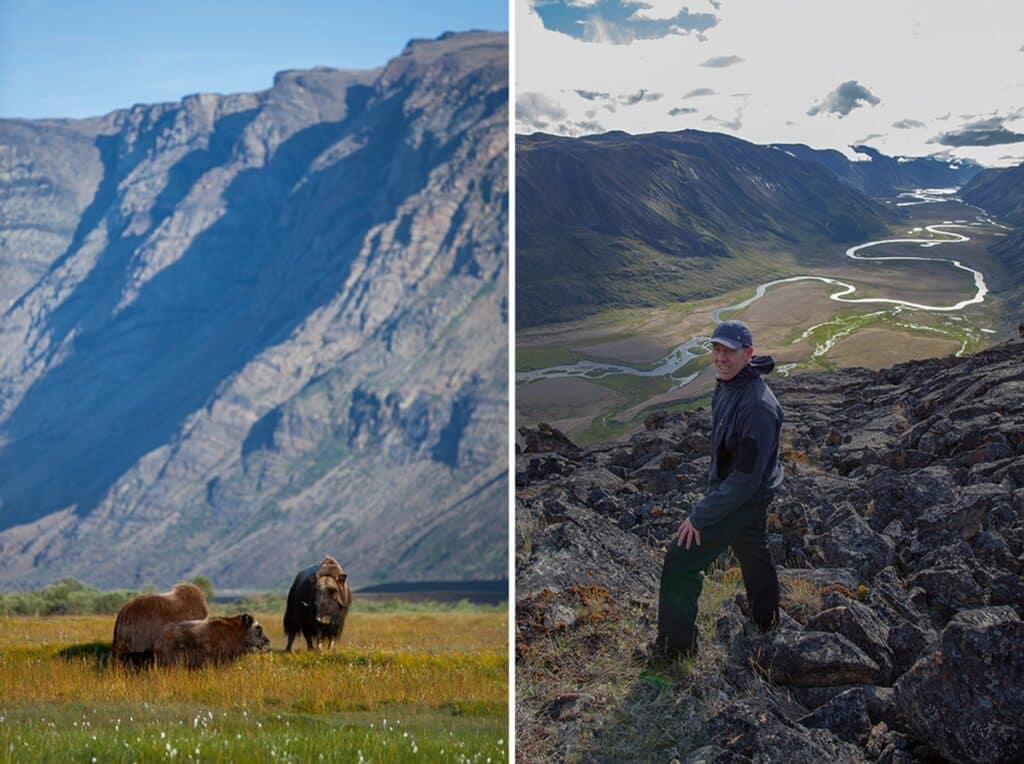
Musk-oxen in Kangerlussuaq
And yet nature is not completely unchanging. Particularly striking is the great number of musk-oxen in the protected area around Arnangarnup Qoorua. At one time during my last visit to Greenland, we counted 69 animals from where we stood and you sometimes have the impression that you find yourself in the middle of a cattle ranch for musk-oxen.
It is hard to understand that there wasn’t actually any musk-oxen in the Kangerlussuaq area until the 1960s. At that time, 27 musk-oxen were moved to the area and since then they have multiplied and there are now thousands of individuals.

Willie the musk-ox
Willie was a legend among the original 27 animals. In 1969 Willie started to visit Kangerlussuaq, apparently interested in human contact. But Willie was a temperamental gentleman and after several confrontations with the locals, Willie was reluctantly caught and hauled away from town.
However, Willie soon returned to Kangerlussuaq and continued to confront the locals. Among other things, Willie attacked a man who was carrying a child in his arms and I have often heard the story of how Willie attacked my pram with me sleeping inside. Naturally, I don’t remember anything, but my mother recounts dramatically how she brought the pram to safety on the stairs up to the apartment block where we lived while Willie gave the banister a good trouncing.
In the end, Willie was shot by my father on the order of the local law enforcement. It was an unpopular decision among the inhabitants of Kangerlussuaq, but I imagine a small part of Willie lives on in Kangerlussuaq’s musk-oxen even today.
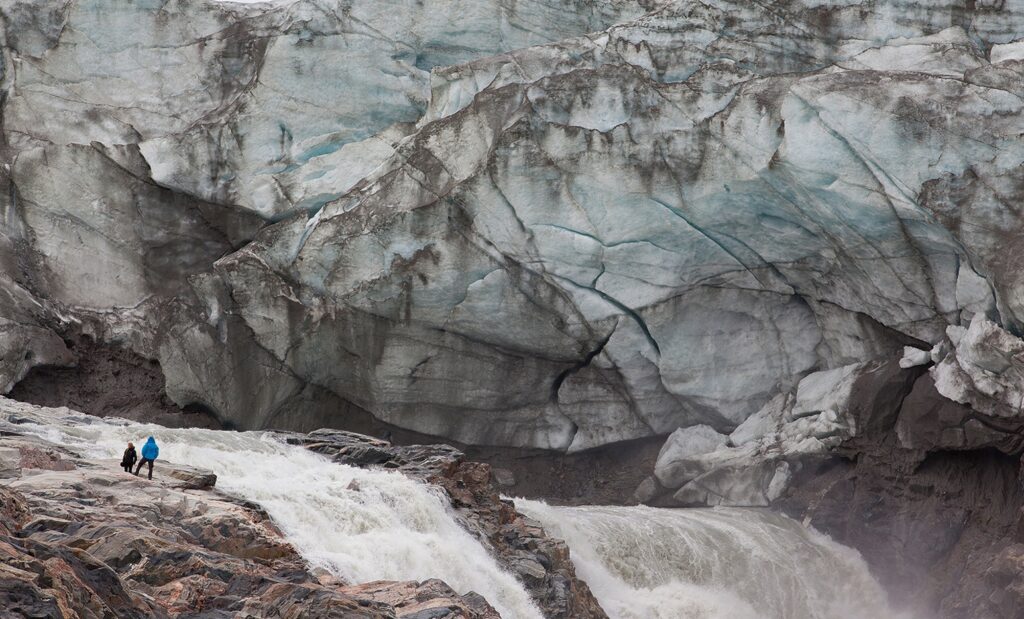
Greenland never let go
There are many memories and it was a great privilege to grow up close to the impressive and untamed Greenlandic nature. This is nature in all its grandeur and ferocity which makes room for reflection and humility in a changing world that moves forward at a fast pace.
These memories of Greenland give me peace in my busy day and I look forward to my next visit to this beautiful country in the north, where I grew up.
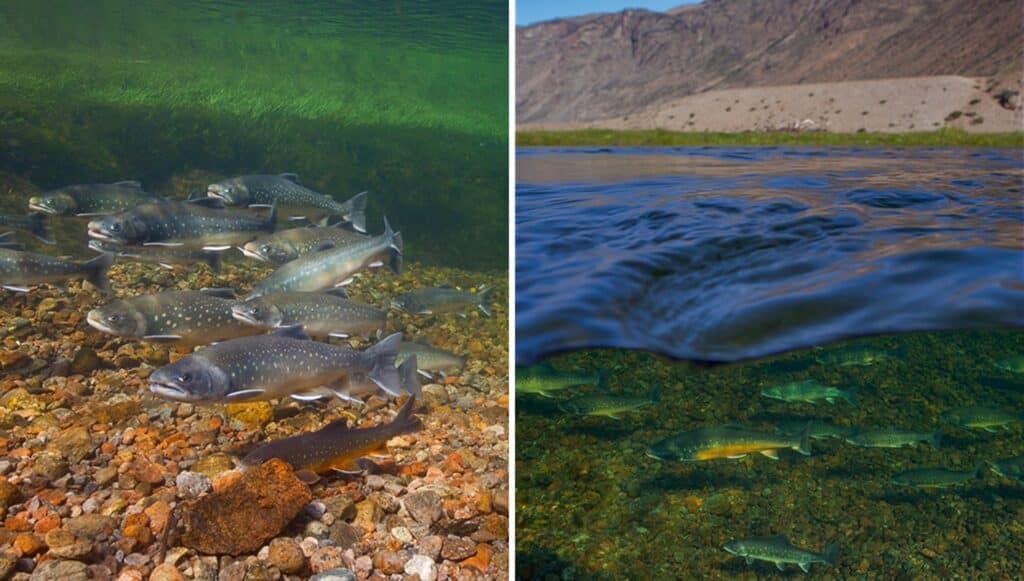
Greenlandic Arctic char (Salvelinus alpinus)
Arctic char are widespread all over Greenland. Like the ordinary brown trout (Salmo trutta) the Arctic char is found in a migratory form that spends its adult life out at sea and then migrates up to spawn in freshwater and a land-locked, resident form that spends its entire life in freshwater lakes and rivers.
The resident form lives in lakes and rivers and has a modest size because it spends its life in the nutrient-poor, fresh-water environments found in the Arctic regions.
In comparison to this, the migratory form can exploit the rich larder that is found along the coasts of Greenland and individuals weighing more than eight kilos have been caught by anglers in Greenland.
Kilo-for-kilo, the Arctic char is one of the strongest of the salmon fish and it is also a superb fish for eating. The Arctic char is therefore much-coveted by anglers. Add to this the fantastic and unique natural experiences Greenland can offer and it is clear why fishing for Arctic char is exceptional.
The migration up the rivers to spawn takes place in the summer months and at that time it is possible to see the well-nourished Arctic char in clear rivers as they migrate towards the spawning grounds where they were born several years earlier. The Arctic char’s spawning dress is a characteristically dark back with lighter spots and the belly varies from light to deep shades of orange and red.

Angling in Greenland
Angling in Greenland requires a licence. Angling is limited or forbidden in several places, primarily around the spawning grounds. Seek advice from local tour operators and authorities.
Facts about the author
Dan Bach Kristensen was born and raised in Greenland. He is a freelance photographer/videographer in his spare time, specializing in underwater takes.
Read more articles from Guide to Greenland
-

Winter Safari | Sisimiut
Tour startsSisimiutDuration1 hourFrom 450 DKKSee more -
Accommodation and tours included!

4 Days with Wildlife Safaris, Glacier Hikes, and Arctic Cuisine | Kangerlussuaq
Tour startsKangerlussuaqDuration4 daysFrom 6560 DKKSee more -
5.00(1)

Master Exploring Ilulissat Icefjord From Above | Ilulissat | Disko Bay
Tour startsIlulissatDuration1.5 hoursFrom 4995 DKKSee more -
New Tour!

Day Kayaking trough the Brede Bay | Ilulissat | Disko Bay
Tour startsIlulissatDuration6 hoursFrom 2495 DKKSee more -
4.88(25)

Nuuk Icefjord | Nuuk
Tour startsNuukDuration6 hoursFrom 2195 DKKSee more -

City tour and hike to the flower valley | Tasiilaq | East Greenland
Tour startsTasiilaqDuration5 hoursFrom 620 DKKSee more -
New Exiting Tour

Guided tour in Nuuk with UTV (Utility Terrain Vehicles) | Nuuk
Tour startsNuukDuration1.5 hoursFrom 1700 DKKSee more -
1 To 6 Passengers Included

Private Deep Sea Fishing Tour | Nuuk
Tour startsNuukDuration3 hoursFrom 7000 DKKSee more -

Best of Ilulissat I 5 days I Disko bay
Tour startsIlulissatDuration5 daysFrom 57600 DKKSee more -
5.00(1)

Snowshoe in the Northern Night | Ilulissat | Disko Bay
Tour startsIlulissatDuration2.5 hoursFrom 550 DKKSee more -
5.00(2)

Photo tour | Nuuk
Tour startsNuukDuration2 hoursFrom 1295 DKKSee more -
Luxury Multi-Day Tour

7-Day Exclusive Luxury Escape: A Premier Greenland Adventure | West Greenland
Tour startsNuukDuration7 daysFrom 78350 DKKSee more -
Flights included

Nature Adventure | South Greenland
Tour startsFrom IcelandDuration8 daysFrom 24200 DKKSee more -
1 to 6 passengers included!

Private Midnight Sun Tour | Uummannaq | North Greenland
Tour startsUummannaqDuration3 hoursFrom 7200 DKKSee more -
4.50(2)

Sightseeing In Kangerlussuaq | West Greenland
Tour startsKangerlussuaqDuration2 hoursFrom 480 DKKSee more -
Accommodation and tours included!

Arctic Capital to Wilderness Escape | 4 Days in Nuuk & 2 Nights at Camp Kangiusaq
Tour startsNuukDuration6 daysFrom 11995 DKKSee more -
5.00(1)New Tour!

Day Hike to ‘Nedkørslen’ | Nuuk
Tour startsNuukDuration6 hoursFrom 995 DKKSee more



